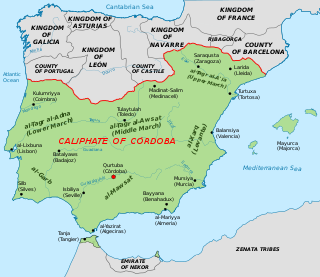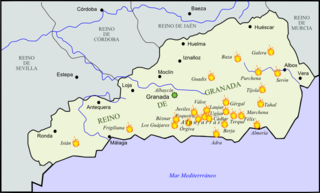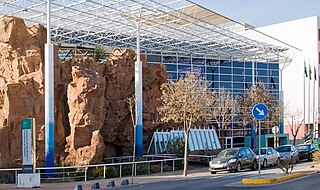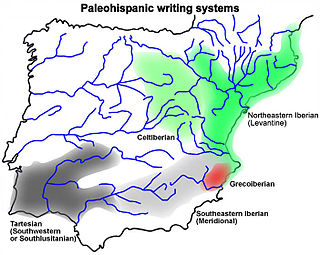 W
WAl-Andalus was the name of the Iberian Peninsula during the Muslim rule, it is used by modern historians as an umbrella term for the former Islamic states in Iberia. At its greatest geographical extent, its territory occupied most of the peninsula and a part of present-day southern France, Septimania, and for nearly a century extended its control from Fraxinet over the Alpine passes which connect Italy to Western Europe. The name more specifically describes the different Arab or Berber states that controlled these territories at various times between 711 and 1492, though the boundaries changed constantly as the Christian Reconquista progressed, eventually shrinking to the south and finally to the vassalage of the Emirate of Granada.
 W
WThe Bombardment of Almería was a naval action which took place on 31 May 1937, during the Spanish Civil War. The Kriegsmarine bombed the city of Almería in retaliation for a Republican air attack on the German cruiser Deutschland.
 W
WThe Rebellion of the Alpujarras (1499–1501) was a series of uprisings by the Muslim population of the Kingdom of Granada, Crown of Castile against their Catholic rulers. They began in 1499 in the city of Granada in response to mass forced conversions of the Muslim population to the Catholic faith, which were perceived as violations of the 1491 Treaty of Granada. The uprising in the city quickly died down, but it was followed by more serious revolts in the nearby mountainous area of the Alpujarras. The Catholic forces, on some occasions led personally by King Ferdinand, succeeded in suppressing the revolts and inflicted severe punishment on the Muslim population.
 W
WThe rebellion of the Alpujarras of 1568–71, sometimes called the War of the Alpujarras or the Morisco Revolt, was the second such revolt against the Castilian Crown in the mountainous Alpujarra region. The rebels were Moriscos, the nominally Catholic descendants of the Mudéjares following the first rebellion of the Alpujarras (1499–1501).
 W
WThe Andalusian independentist conspiracy in 1641 was an alleged conspiracy of Andalusian nobility for Andalusia to secede from Spain. The conspiracy was brought to an end in summer 1641 after the plans of rebellion were discovered.
 W
WAndalusian patios are central open spaces in the courtyard houses of Al-Andalus (Spain). The stone patios are an architectural evolution of the Roman atrium.
 W
WThe Assembly of Ronda or Assembly of the Andalusian Provinces in Ronda was a gathering of Andalusian nationalists convoked by the Centros Andaluces in Ronda, Province of Málaga in January 1918. It was the first Andalusian regionalist gathering to adopt what Blas Infante called "the insignia of Andalusia", now the flag and emblem of the autonomous community of Andalusia.
 W
WThe Black Hand was a presumed secret, anarchist organization based in the Andalusian region of Spain and best known as the perpetrators of murders, arson, and crop fires in the early 1880s. The events associated with the Black Hand took place in 1882 and 1883 amidst class struggle in the Andalusian countryside, the spread of anarcho-communism distinct from collectivist anarchism, and differences between legalists and illegalists in the Federación de Trabajadores de la Región Española.
 W
WThe Casas Viejas incident, also known as the Casas Viejas events, took place in 1933 in the village of Casas Viejas, in Cádiz province, Andalusia.
 W
WThe Emirate of Granada, also known as the Nasrid Kingdom of Granada, was an Islamic realm in southern Iberia during the Late Middle Ages. It was the last independent Muslim state in Western Europe.
 W
WThe Four Kingdoms of Andalusia was a collective name designating the four kingdoms of the Crown of Castile located in the southern Iberian Peninsula, south of the Sierra Morena. These kingdoms were annexed from other states by the Kingdoms of Castille during the Reconquista: the Kingdom of Córdoba was conquered in 1236, the Kingdom of Jaén in 1246, the Kingdom of Seville in 1248 and the Kingdom of Granada in 1492.
 W
WThe Kingdom of Granada was a territorial jurisdiction of the Crown of Castile from the conclusion of the Reconquista in 1492 until Javier de Burgos' provincial division of Spain in 1833. This was a "kingdom" ("reino") in the second sense given by the Diccionario de la lengua española de la Real Academia Española: the Crown of Castile consisted of several such kingdoms. Its extent is detailed in Gelo del Cabildo's 1751 Respuestas Generales del Catastro de Ensenada (1750–54), which was part of the documentation of a census. Like the other kingdoms within Spain, the Kingdom of Granada was abolished by the 1833 territorial division of Spain.
 W
WInstituto de Estadística y Cartografía de Andalucía (IECA) is a public organization which coordinates and announces statistics and cartography in Andalucía. In 2019 it was named Elena Manzanera Díaz as the directress.
 W
WThe Roman amphitheatre of Italica is a ruined Roman amphitheatre situated in the Roman settlement of Italica, present-day Santiponce, in Andalusia, Spain.
 W
WThe Kingdom of Jaén was a territorial jurisdiction of the Crown of Castile since 1246 and until Javier de Burgos' provincial division of Spain in 1833. This was a "kingdom" ("reino") in the second sense given by the Diccionario de la lengua española de la Real Academia Española: the Crown of Castile consisted of several such kingdoms. Known also as the "Santo Reino", its territory coincided roughly with the present-day province of Jaén. Jaén was one of the Four Kingdoms of Andalusia. Its extent is detailed in Respuestas Generales del Catastro de Ensenada (1750–54), which was part of the documentation of a census.
 W
WThe Madrid Defense Council was an ad-hoc governing body that ran Madrid, Spain, for about six months during the Spanish Civil War (1936–39). It was formed in November 1936 after the Spanish Republican government had fled to Valencia when General Francisco Franco's forces advanced on Madrid. It was expected that the city would fall within a few days, but the arrival of the International Brigades halted the rebel advance, and the situation settled into a stalemate. The council was dominated by communists, who had superior organization and propaganda to the other groups. Their policy was to organize the militias into regular troops and focus on defeating the enemy, rather than to undertake revolutionary activity. As time passed there was growing tension between the communists and more radical groups. The council was dissolved in April 1937 and replaced by a new city council.
 W
WThe Málaga Public Health Committee was a revolutionary organism that emerged after the coup d'état that gave way to the Spanish Civil War, between the Nationalists and the Republicans. This entity was in charge of managing all political and social affairs until the city fell to the nationalist forces.
 W
WThe Mudéjar revolt of 1264–1266 was a rebellion by the Muslim populations (Mudéjares) in the Lower Andalusia and Murcia regions of the Crown of Castile. The rebellion was in response to Castile's policy of relocating Muslim populations from these regions and was partially instigated by Muhammad I of Granada. The rebels were aided by the independent Emirate of Granada, while the Castilians were allied with Aragon. Early in the uprising, the rebels managed to capture Murcia and Jerez, as well as several smaller towns, but were eventually defeated by the royal forces. Subsequently, Castile expelled the Muslim populations of the reconquered territories and encouraged Christians from elsewhere to settle their lands. Granada became a vassal of Castile and paid an annual tribute.
 W
WAlonso Sánchez de Huelva was a fifteenth-century mariner and merchant born in Huelva, Spain, on Andalusia's Atlantic coast. Legend has it that he reached America several years before Christopher Columbus did.
 W
WThe Señorío de Sanlúcar or Lordship of Sanlúcar was an independent Christian lordship in the Kingdom of Castile located in and around the modern day city of Sanlúcar de Barrameda. It was taken from the Kingdom of Granada in 1295.
 W
WThe Kingdom of Seville was a territorial jurisdiction of the Crown of Castile since 1248 until Javier de Burgos' provincial division of Spain in 1833. This was a "kingdom" ("reino") in the second sense given by the Diccionario de la lengua española de la Real Academia Española: the Crown of Castile consisted of several such kingdoms. Seville was one of the Four Kingdoms of Andalusia. Its extent is detailed in Respuestas Generales del Catastro de Ensenada (1750-54), which was part of the documentation of a census. Falling largely within the present day autonomous community of Andalucia, it included roughly the territory of the present-day provinces of Huelva, Seville, and Cádiz, the Antequera Depression in the present-day province of Málaga, and also some municipalities in the present-day autonomous communities of Extremadura in the province of Badajoz.
 W
WMuslims, Christians, and Jews co-existed for over seven centuries in the Iberian Peninsula during the era of Al-Andalus states. The degree to which the Christians and the Jews were tolerated by their Muslim rulers is a subject widely contested among historians. The history of Al-Andalus indicates that Muslims, Christians, and Jews who lived within Al-Andalus had relatively peaceful relations, with the exception of a few scattered revolts, and times of religious persecution. The great amount of cultural and social interaction that took place between these three distinct social and religious groups led to the creation of a unique and diverse culture that continued to flourish even after the Reconquista.
 W
WThe Southwest Script or Southwestern Script, also known as Tartessian or South Lusitanian, is a Paleohispanic script used to write an unknown language usually identified as Tartessian. Southwest inscriptions have been found mainly in the southwestern quadrant of the Iberian Peninsula, mostly in the south of Portugal, but also in Spain.
 W
WThe Taifa of Almería was a Muslim medieval Arab kingdom located in what is now the province of Almería in Spain. The taifa originated in 1012 and lasted until 1091.
 W
WThe Taifa of Algeciras was a medieval Muslim taifa kingdom in what is now southern Spain and Gibraltar, that existed from 1035 to 1058.
 W
WThe Taifa of Arcos was a Berber medieval taifa kingdom that existed in two periods; first from 1011 to 1068. Ruled by the Zanata Berber family of the Banū Jizrūn. From 1068 until 1091 it was under the forcible control of Seville, by Abbad II al-Mu'tadid. It regained its independence from 1143 to 1145 when it was finally conquered by the Almohad Caliphate.
 W
WThe Taifa of Ronda was a medieval Berber taifa kingdom centered in Moorish al-Andalus in what is now southern Spain. It existed from 1039 to 1065. The taifa was ruled by a family from the Berber Banu Ifran tribe of North Africa. Its capital was the city of Ronda. From 1065 until 1091, the taifa was under the control of the Taifa of Seville, led by Abbad II al-Mu'tadid.